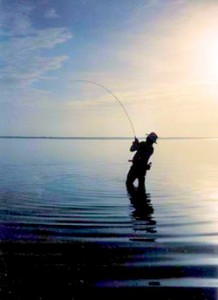Competitive fly fishing is somewhat of an anomaly to fisherman in the US.
We see huge bass fishing tournaments on TV all the time, but rarely do we hear of the fly fishing versions. Indeed, there are not a ton of competitive fly fishing tournaments to be found here.
However in Europe, this is not the case at all. In fact, the technique that you will learn shortly comes directly from a fly fishing competition in 1984.
The Curious Origins Of Czech Nymphing
So, one would automatically think that, given the name, this fly fishing technique was born in Czechoslovakia, right? Well, that would be incorrect.
In 1984, the Czech team was introduced to this method of fishing by the Polish team. By introduced, I mean the Poles kicked their fly fishing butts!
The technique was born out of necessity as the Polish team had limited resources and gear available to them in their native Poland. Instead of complaining about it, they developed a short casting technique that still allowed them to put fish on shore.
The following year, the World Championship was held in Poland, and the Czechs, using the method they learned from the Poles, took home the silver medal—the gold went to the Polish team.
In 1986, the Czech team again used this technique in competition, this time walking away with a gold medal for their methods.
The Long And “Short” Of Czech Nymphing
So, by now you are probably saying, “Alright, let’s get to it! Tell me how to do it!”
Absolutely, I thought you’d never ask!
Czech nymphing uses two or three nymphs. I like to use three in deeper water, two in shallower water (no brainer there, right?). You don’t really “cast” the flies so much as you flip, or roll them out. When performing this technique, your fly line will probably not ever have to touch the water at all.
Once you have your nymphs tied on, and you are ready to hit the water, you will flip your flies upstream, just as in a normal fly cast. However, instead of a long cast, you will be flipping only a preset amount of leader. I like to let my top fly get no more than 6 inches under the surface in most situations.
Once you’ve flipped, you are going to start your drift. Since there is not an abundance of line out in the water, there really isn’t a need to mend. You will want to keep your line below your rod tip. As the flies drift, follow the flies with the tip, keeping the same speed.
Important Note: Maintaining the same speed as the flies during the drift, and keeping the line taught. If you do not, you will have a very hard time setting the hook and catching the fish. When fish bite on this technique, they don’t usually blow up on it, and the strike is very subtle.
When the flies get fully down stream of you, go ahead and make another flip. Yes, that really is the whole technique.
Czech Nymphing Equipment
The great part about this technique, is that it doesn’t require any special equipment. You can use your favorite fly rod, in whichever weight you like and is appropriate for the species of fish.
You can also use your favorite fly line, and fly reel. Really, despite what you may read elsewhere, you do NOT need to make any significant changes to your fly fishing equipment to utilize Czech nymphing. Use whatever you are comfortable with using.
Here is a quick tip about choosing a leader for Czech nymphing. Make sure your leader is not longer than your rod. For example, if you have an eight foot rod, your leader should not be longer than 8 feet. This will make controlling your flies, and setting your hook much easier.
A Quick Czech Nymphing Video
Here is a great video to give you some live action and get you started Czech nymphing.
[http://www.youtube.com/watch?v=hzCOBYzAF6U]
I hope you will give this technique a try on your next trip to the river. It really is very simple, and a lot of fun to do.
